22 Cities Where You Can Live Car-Free
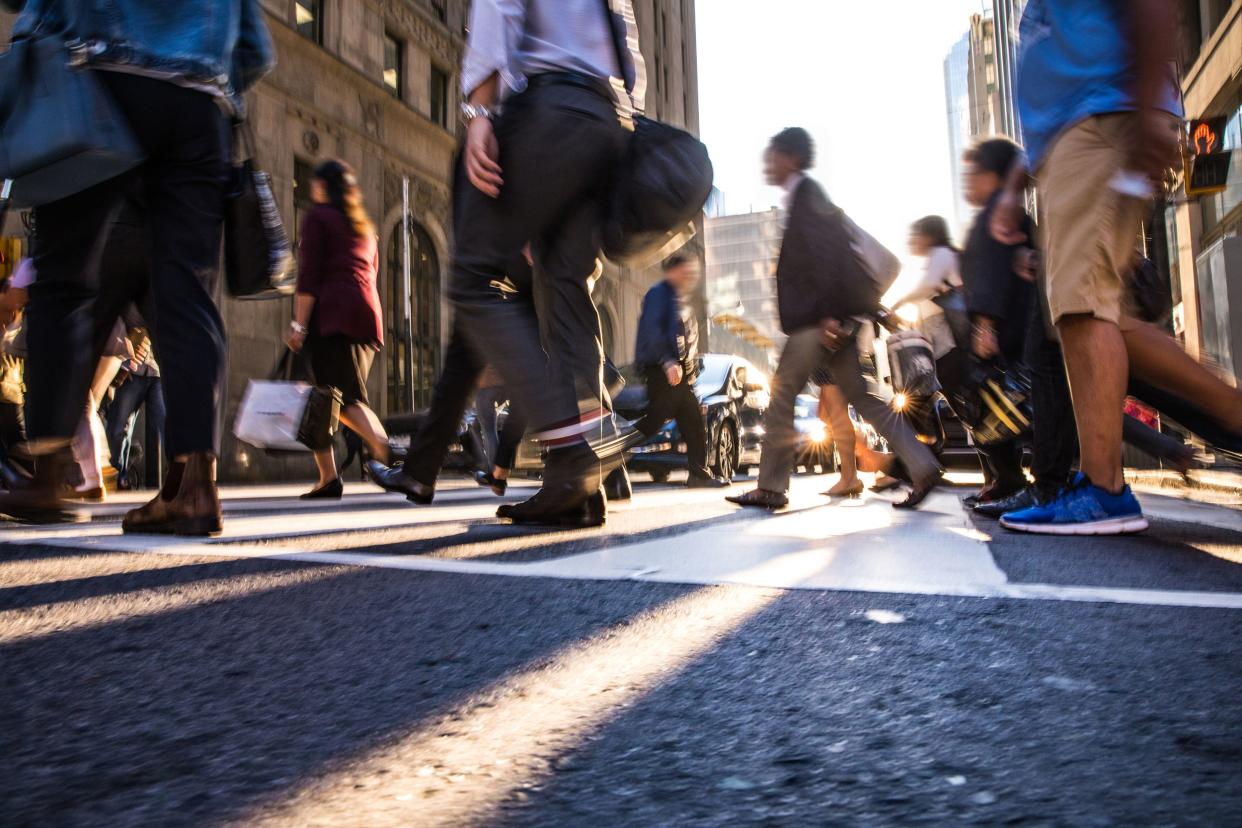
There are a lot of benefits to owning a car, not the least of which is being able to travel whenever and wherever you want. But that freedom ain't free, according to AAA. It estimates that the average cost of owning a car is between $8,307 and $11,054 a year, depending on how much you drive. One way to minimize that cost is to ditch the car and take public transit or a rideshare service, bike, or walk instead. These cities make it easier for their residents to drive less and save more.
Related: 20 Bike-Friendly Cities for a Vacation
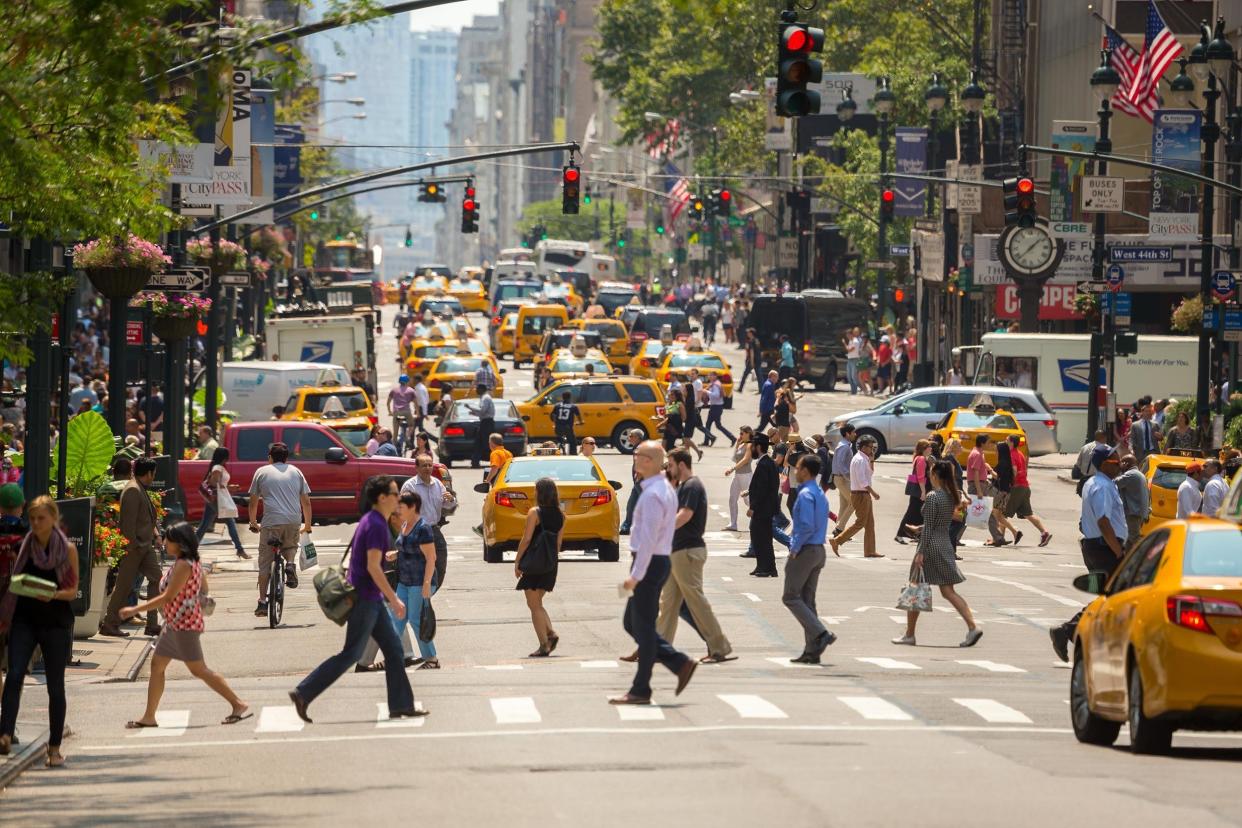
In most parts of the five boroughs, you are rarely more than a 10-minute walk from the closest subway station — and those subways run 24/7. Perhaps this explains why more than half of New York City households don't own a car, by far the largest percentage in the country. The Big Apple is also rated No. 2 in the nation for walkability and public transit access.
Related: 52 Free or Cheap Things to Do in New York City
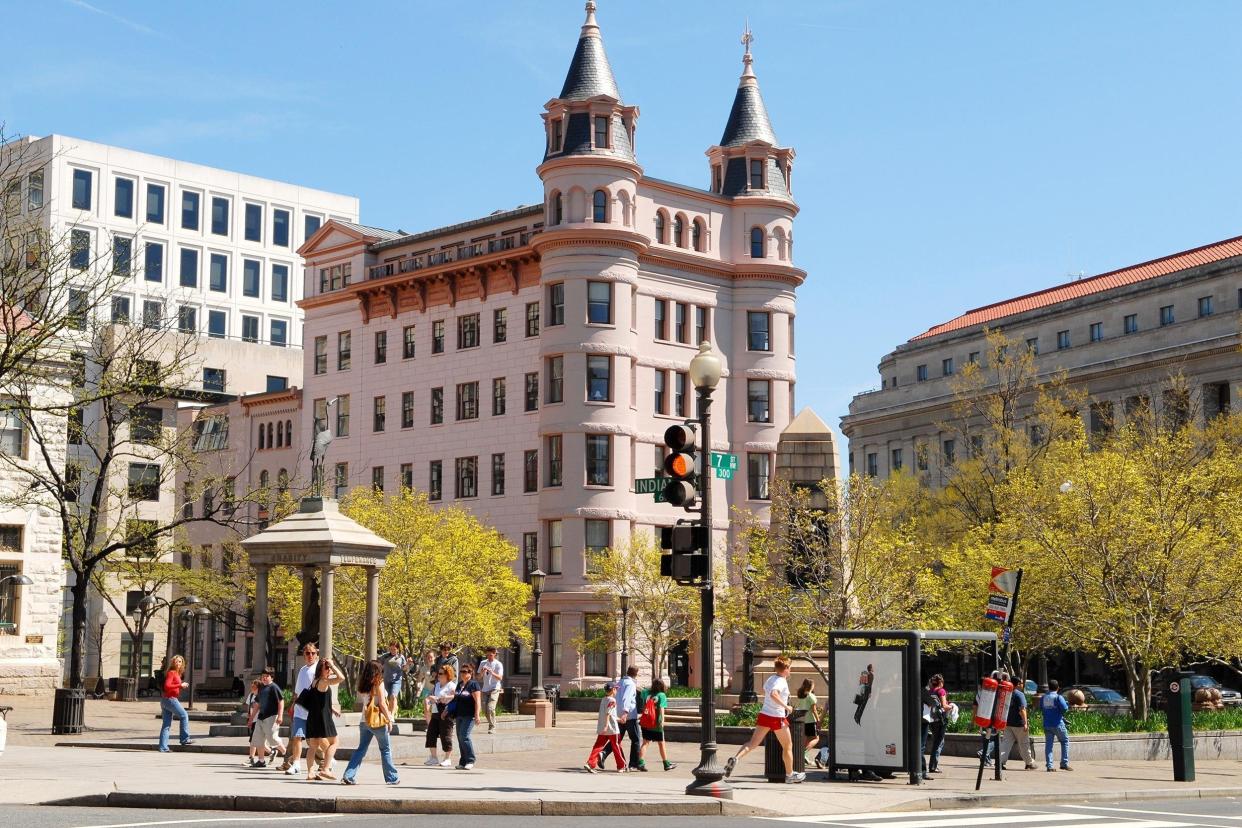
The nation's capital may be relatively compact compared with some of the sprawling cities on this list, but it rivals them with its sizable rapid-transit system, the Metro, which stretches into Virginia and Maryland. (It's the third busiest in the nation when it comes to heavy heavy rail, only behind New York City and Chicago in terms of ridership.) Washington is ranked No. 5 on Walk Score's list of most-walkable cities, and it scores highly for public transit access as well. Walkable neighborhoods include U Street and Dupont Circle.
Related: 23 Free or Cheap Things to Do in Washington, D.C.
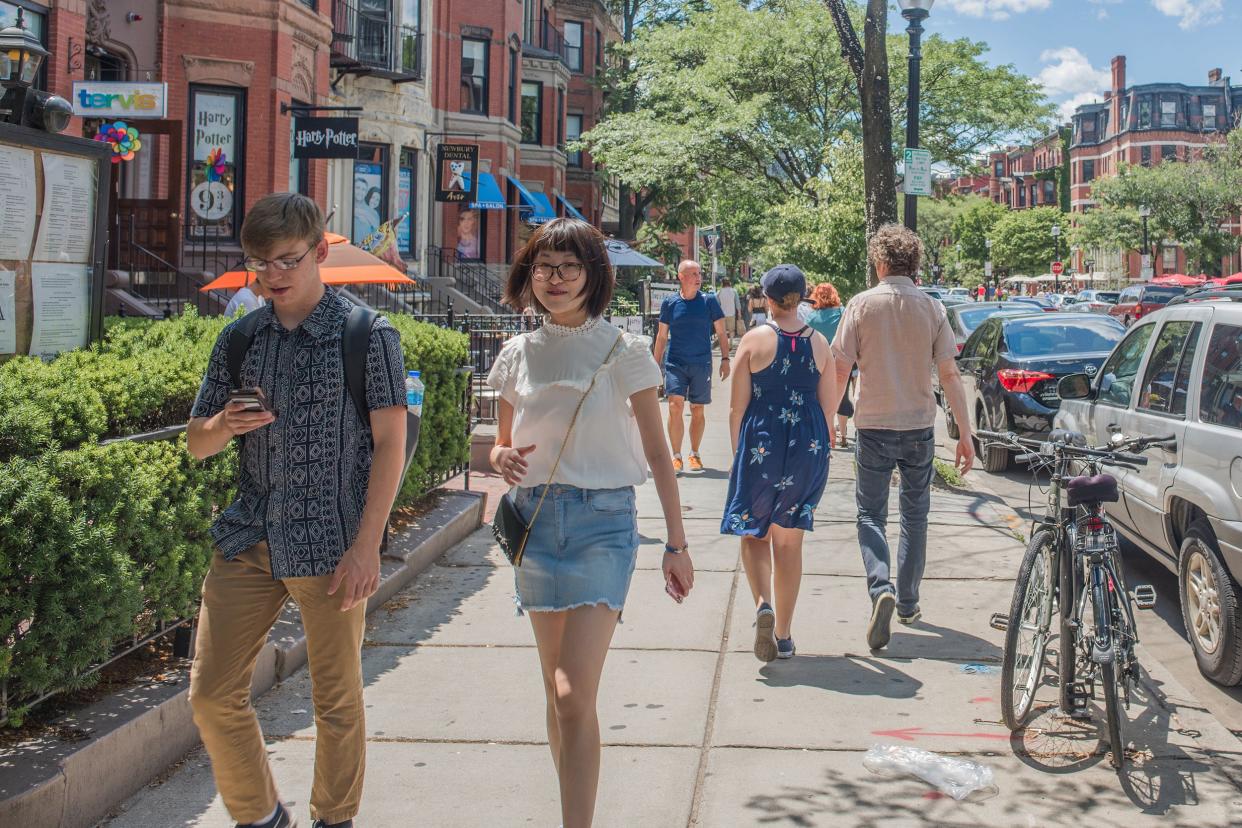
Boston's tangle of streets make driving rather difficult, but its public transit system, which includes subway, bus, and commuter rail, links a metropolitan area that extends from New Hampshire to Rhode Island. The city is also highly walkable and bike-friendly, ranked No. 3 in the U.S. according to Walk Score. Among Boston's most walkable areas are Chinatown, Bay Village, and Beacon Hill.
Related: Best Things to Do in Boston
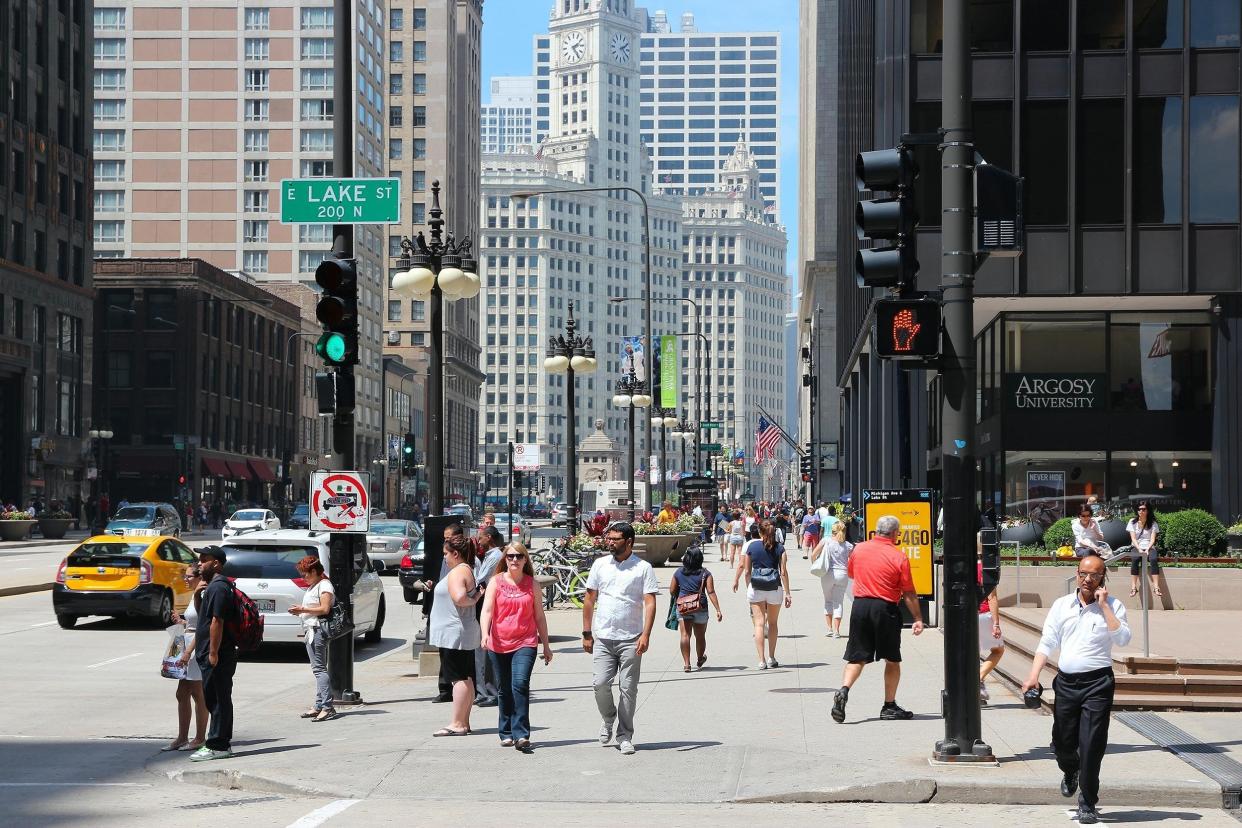
Chicago's mass-transit system is the second-busiest in the nation, and the Chicago Transit Authority's network of elevated rapid-transit lines (its beloved "L"), commuter rail, and bus system can take you throughout the city and as far as the state lines. The city is both bikeable and walkable, as well, with Walk Score identifying the West Loop, Near North Side, and East Ukrainian Village as the most pedestrian-friendly neighborhoods.
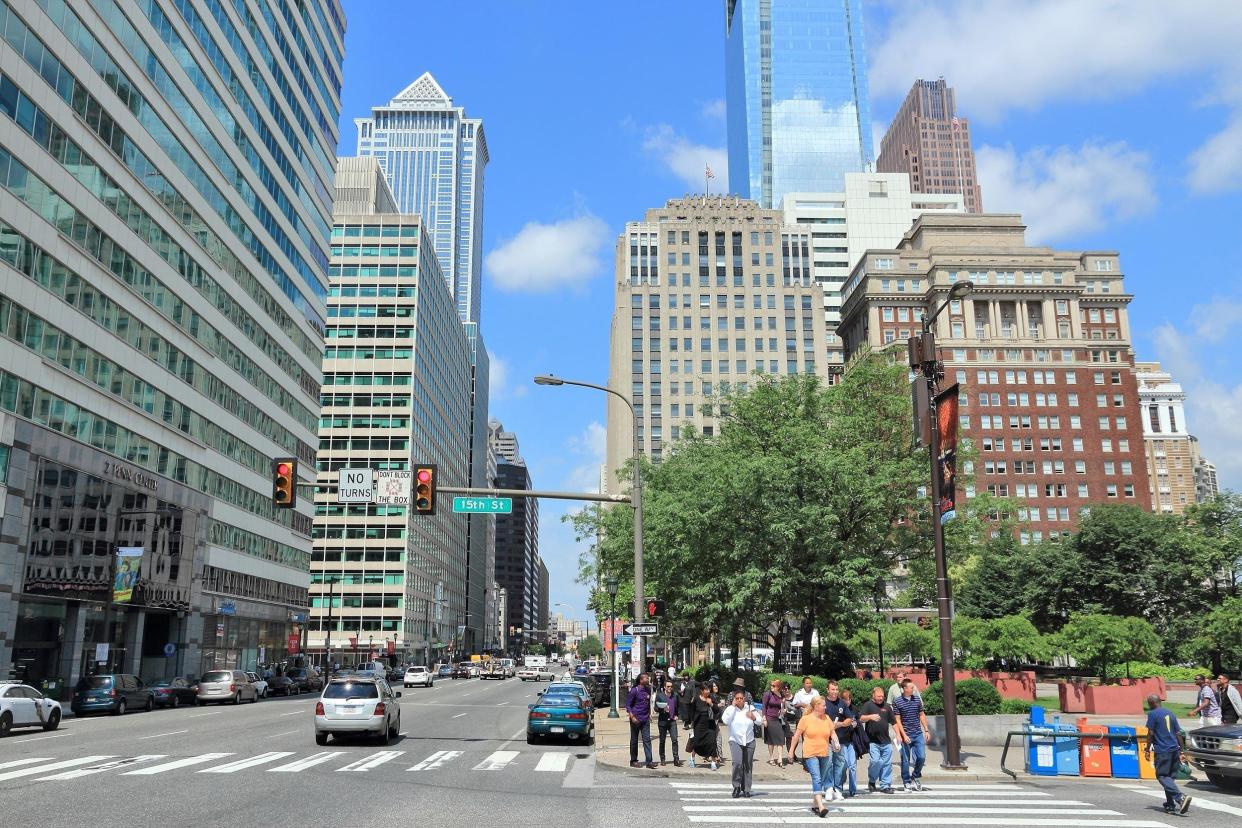
Like other East Coast cities, Philadelphia has a relatively low rate of vehicle ownership and an established, extensive public transit network. The Southeastern Pennsylvania Transportation Authority, or SEPTA, provides public transit ranging from commuter rails and trolleys to buses and subways within the city, but Philadelphia is also one of the most pedestrian-friendly cities in the country. The most walkable neighborhoods include Avenue of the Arts South, Center City West, and Rittenhouse Square.
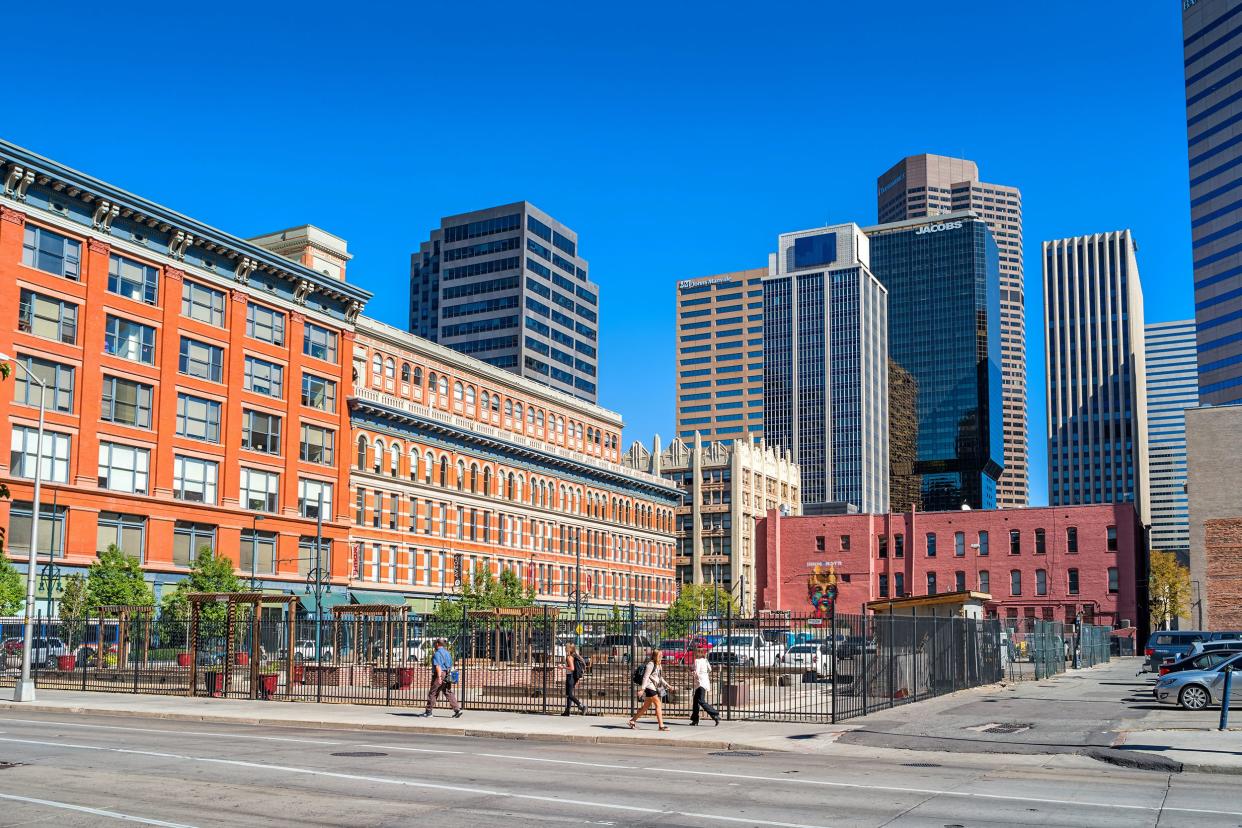
Visitors and residents can get around the Mile High City easily and inexpensively by using the Regional Transportation District's (RTA) light rail and bus lines, including a line from downtown to Denver International Airport. Denver also has some of the best infrastructure for bicyclists in the country between its flat terrain and dedicated bike lanes. The most walkable neighborhoods here are Capitol Hill, Five Points, and, of course, downtown.
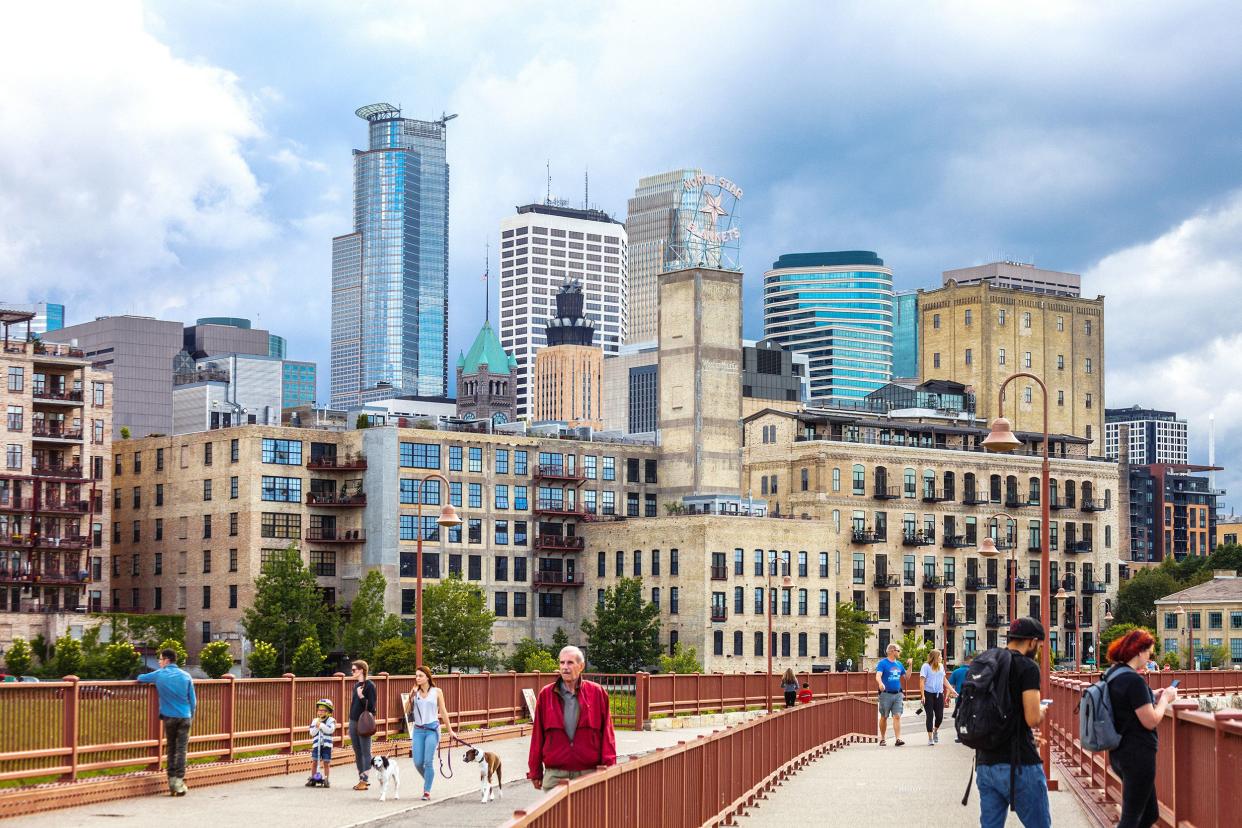
Minneapolis has public transportation options, including bus, light rail, and commuter rail, but the city really shines when it comes to walkability and bikeability scores, according to Walk Score. A University of Minnesota study found that more than 400,000 residents in the metropolitan area bike or walk to work each day. Their routines are aided by the relatively flat terrain, which makes both walking and biking a breeze. If you plan on walking, try living in Lowry Hill East, Lyn-Lake, or Downtown West.
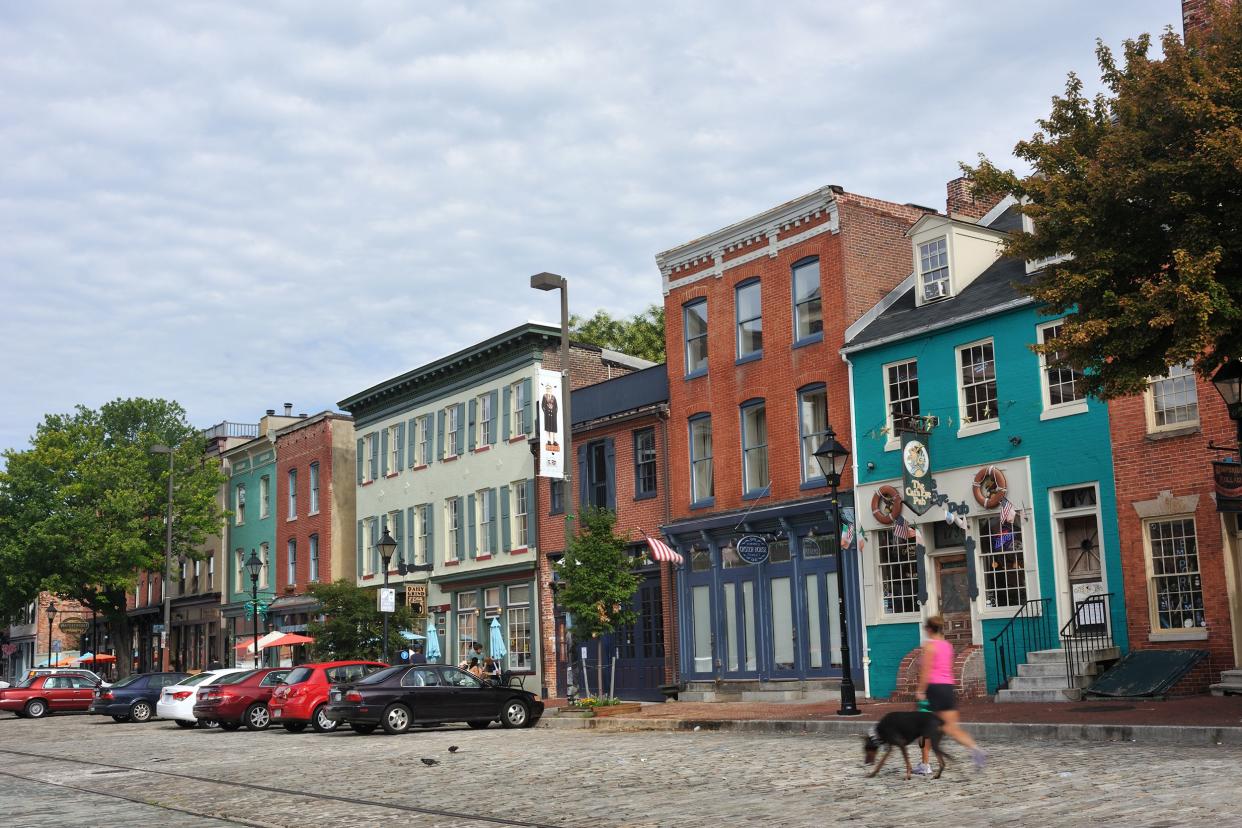
Baltimore's public transit options are more limited than nearby Washington, D.C., but it still ranks in the top 20 for walkable large U.S. cities. You can also get around town via the Charm City Circulator, a bus that runs every 10 minutes for most of the day, seven days a week, and transports 4 million people a year. The best part: It's completely free.
Related: The Best Things To Do In Baltimore
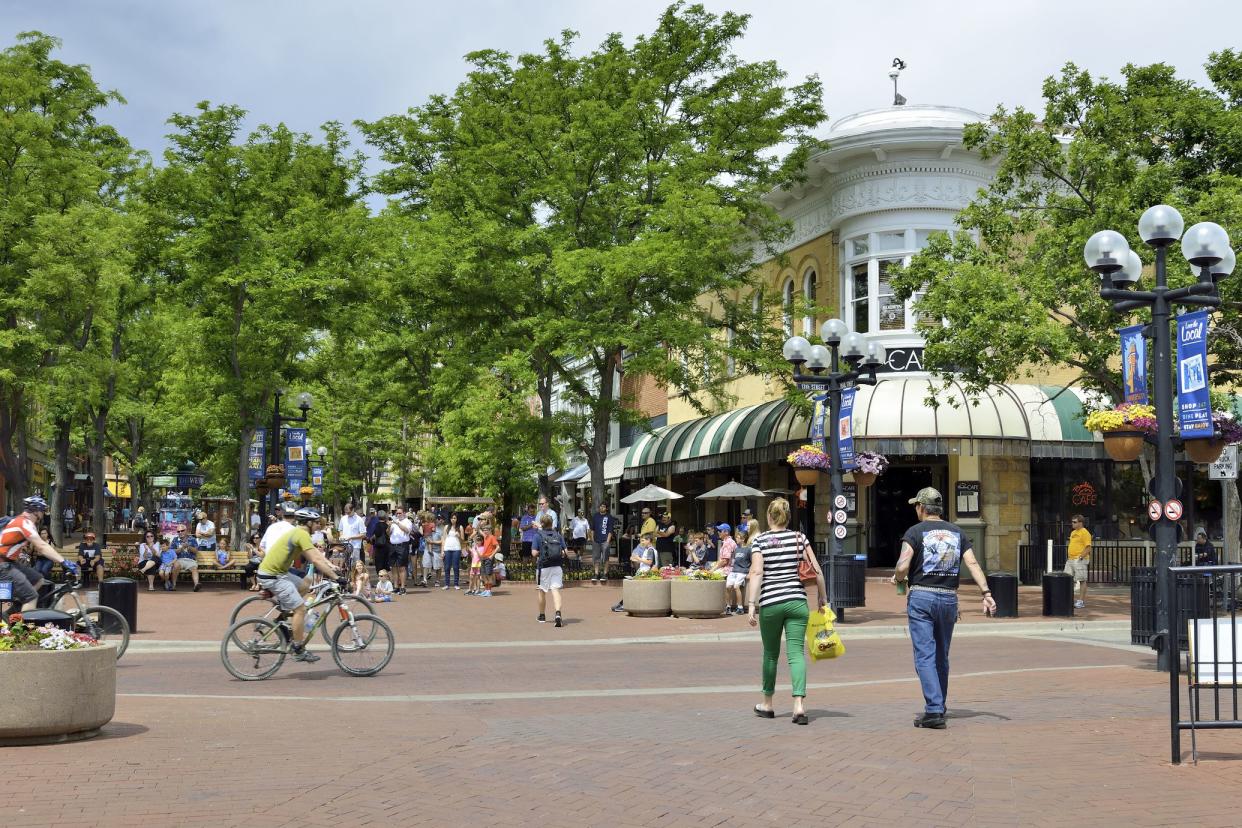
This scenic and eminently livable university town boasts a walkable core and solid bus service for a city of its size, but where Boulder really shines is in bikeability. It ranked as America's No. 7 best bicycling city in an analysis by People for Bikes and earns an 86/100 for bikeability from Walk Score, with more than 9% of commuters going by bike. Boulder's best areas to live without a car include Whittier, Gloss-Grove, and University Hill.
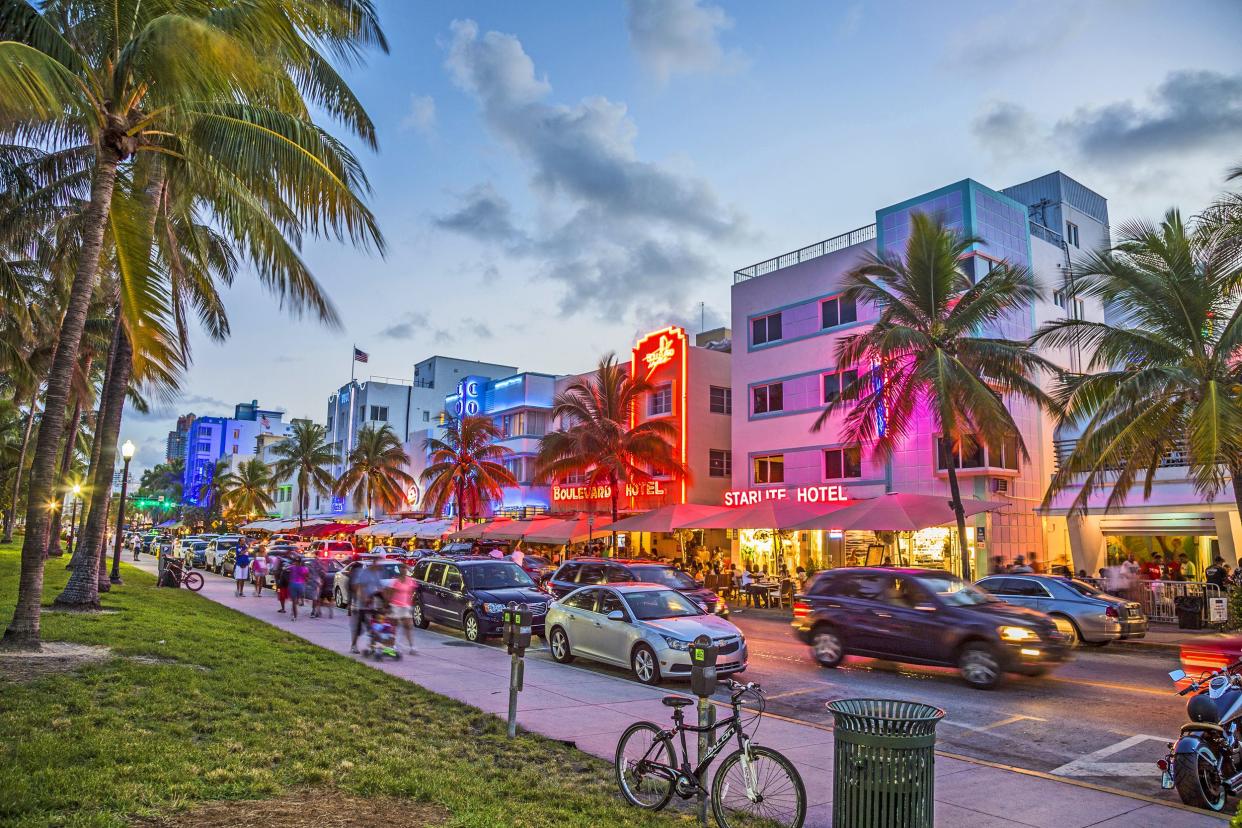
Miami ranks seventh among Walk Score's ranking of the most walkable U.S. cities, which may explain in part why almost a fifth of households get by without a car, according to 2015 and 2016 data. Its public transit includes commuter rail, buses, and the free Metromover servicing downtown. Miami's most walkable neighborhoods include Little Havana and Wynwood-Edgewater.
Related: 20 Free or Cheap Things to Do in Miami
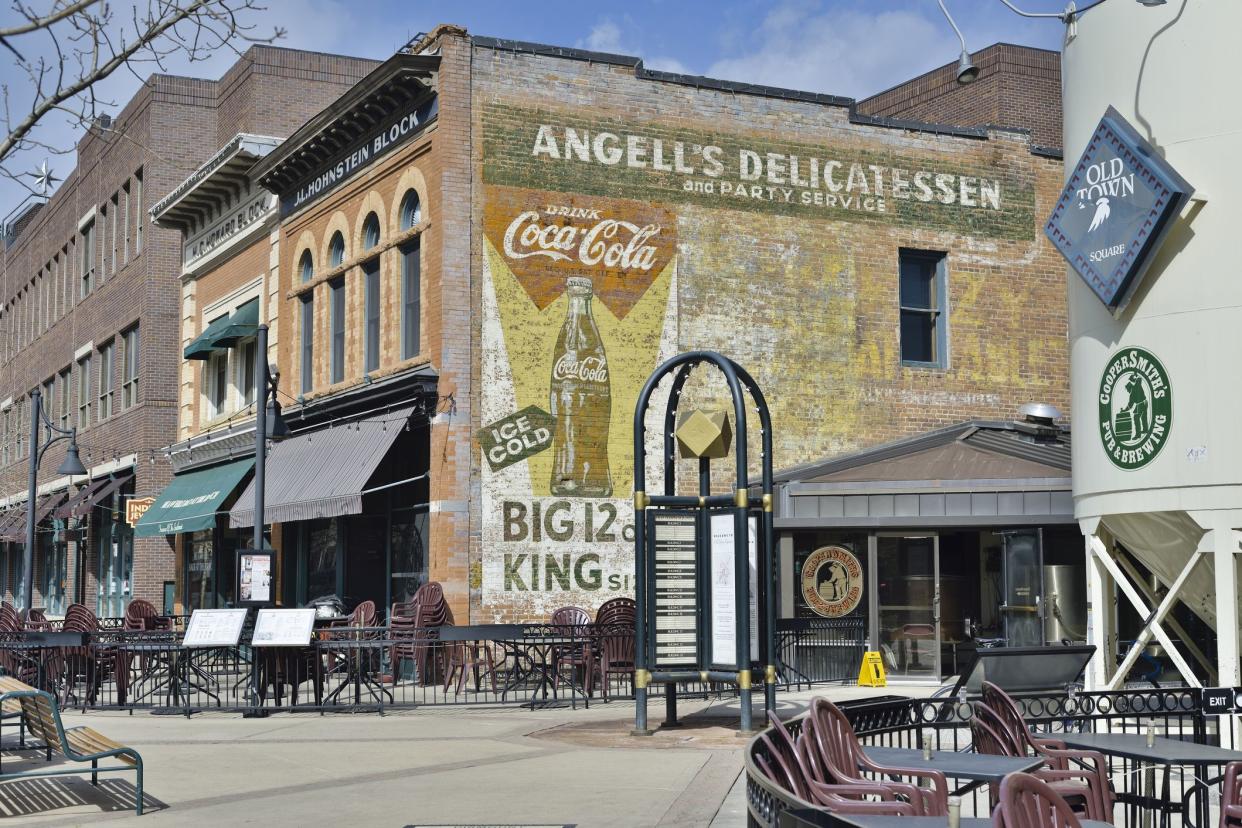
This city doesn't rank highly for walkability, but it's exceptional among non-coastal cities for its bike-friendliness. It ranked among the top 15 best bicycle cities in the nation, with multi-use paths and over and underpasses across major intersections. Roughly 5% of commuters to bicycle to work, and slightly less than 5% of households make do without a car, according to a 2015-2016 survey. The most walkable neighborhoods here are Old Town, University Park, and downtown.
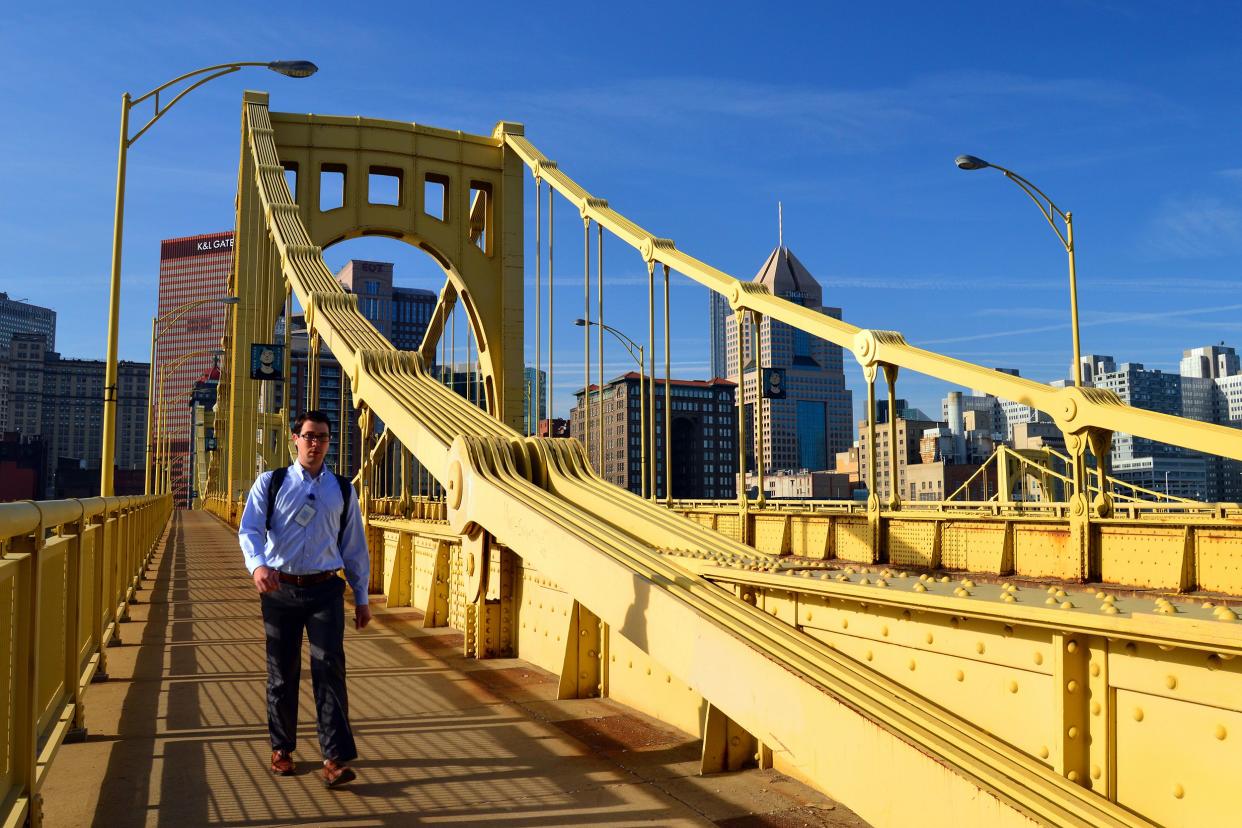
Pittsburgh doesn't enjoy quite as high a walkability score as that other Pennsylvania metropolis, Philadelphia. Its public transit system of bus lines and light rail is somewhat more limited as well. But the city has some very compact residential areas, such as the Central Oakland and Friendship neighborhoods, and average commute times for public transit riders is nearly on par with driving, according to one study.
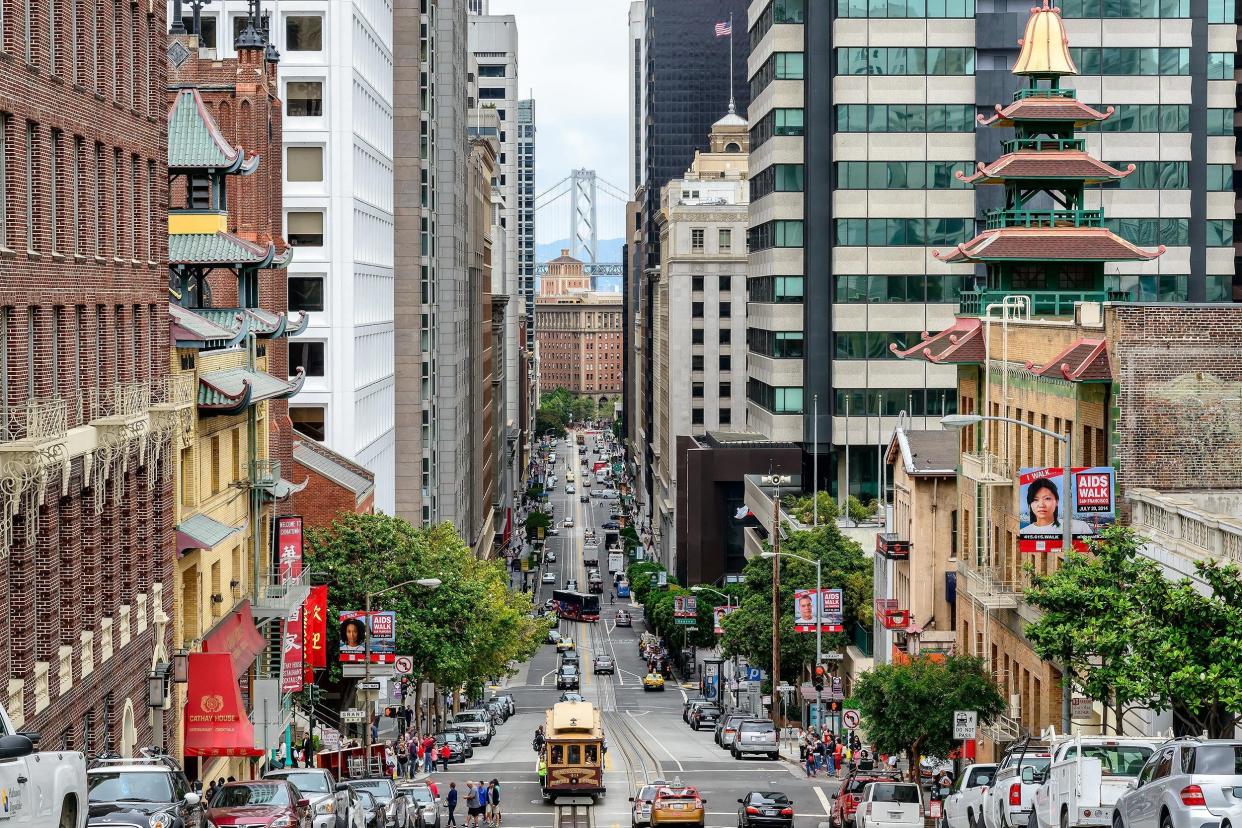
San Francisco's Bay Area Rapid Transit system (BART), bus lines, and commuter rail add up to some of the best public transit in the country. Despite the hilly terrain, San Francisco is easily navigable by foot. Among the most walkable neighborhoods are Union Square, Lower Nob Hill, and Chinatown, according to Walk Score, which ranks San Francisco as the nation's most-walkable city.
Related: 20 Free and Cheap Things to Do in San Francisco
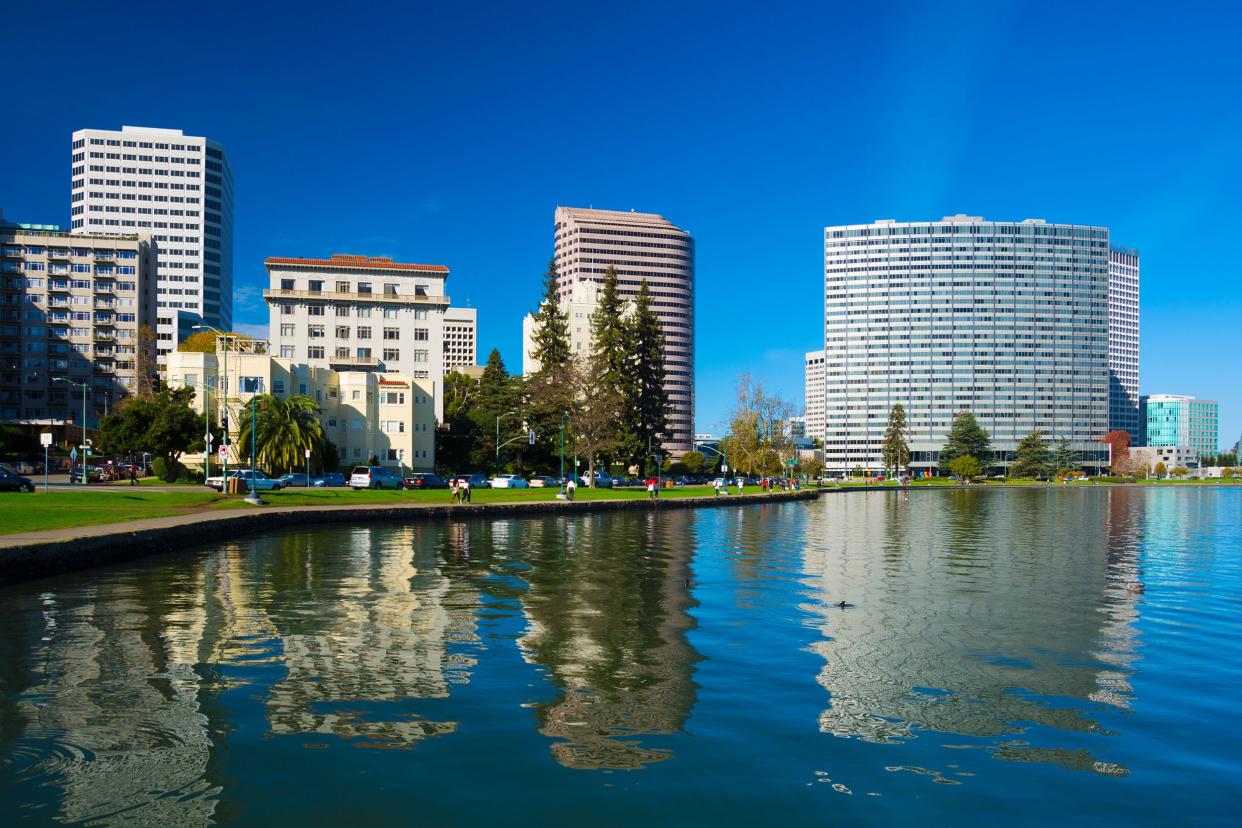
Like its sister city San Francisco, Oakland shares the same BART system, allowing residents to travel throughout the Bay Area and connect to commuter rail that extends to Sacramento and Southern California. It's also highly walkable, according to Walk Score, though its overall public transit rank isn't quite as high.
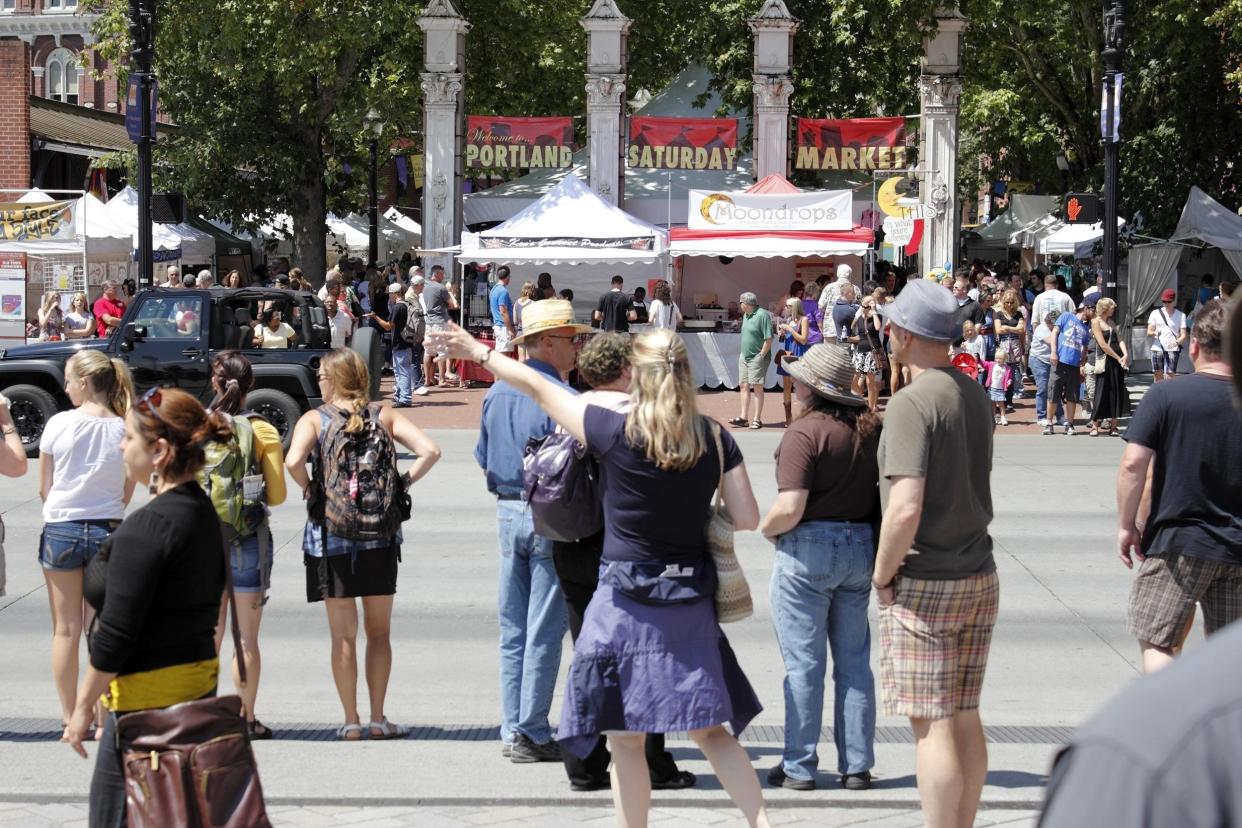
Portland's TriMet serves the metropolitan area with bus, light rail, and commuter rail, but what really sets Portland apart is how bikeable it is. More than 6% of Portlanders commute on two wheels, the highest rate of any city, according to BikeAdviser's analysis of 2020 census data. The most walkable areas are downtown, the Pearl District, and Old Town Chinatown.
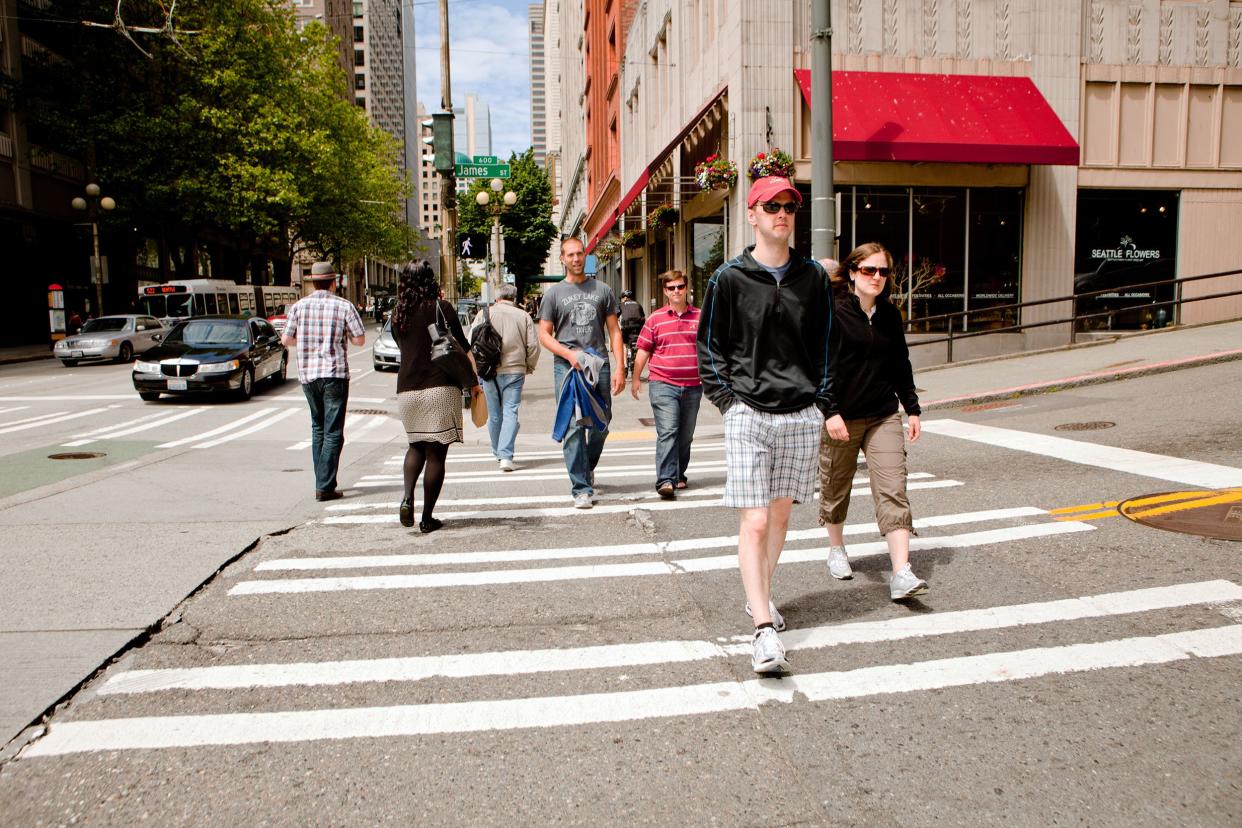
The Pacific Northwest's largest city has a rapid transit line called Link Light Rail connecting the airport to the University of Washington campus, while the rest of the metropolitan area is covered by three separate bus lines and two commuter rails. The hilly terrain doesn't deter the city's many bike commuters, and one of their most unique transit amenities is the ferry system, which connects the downtown to communities on the other side of Puget Sound.
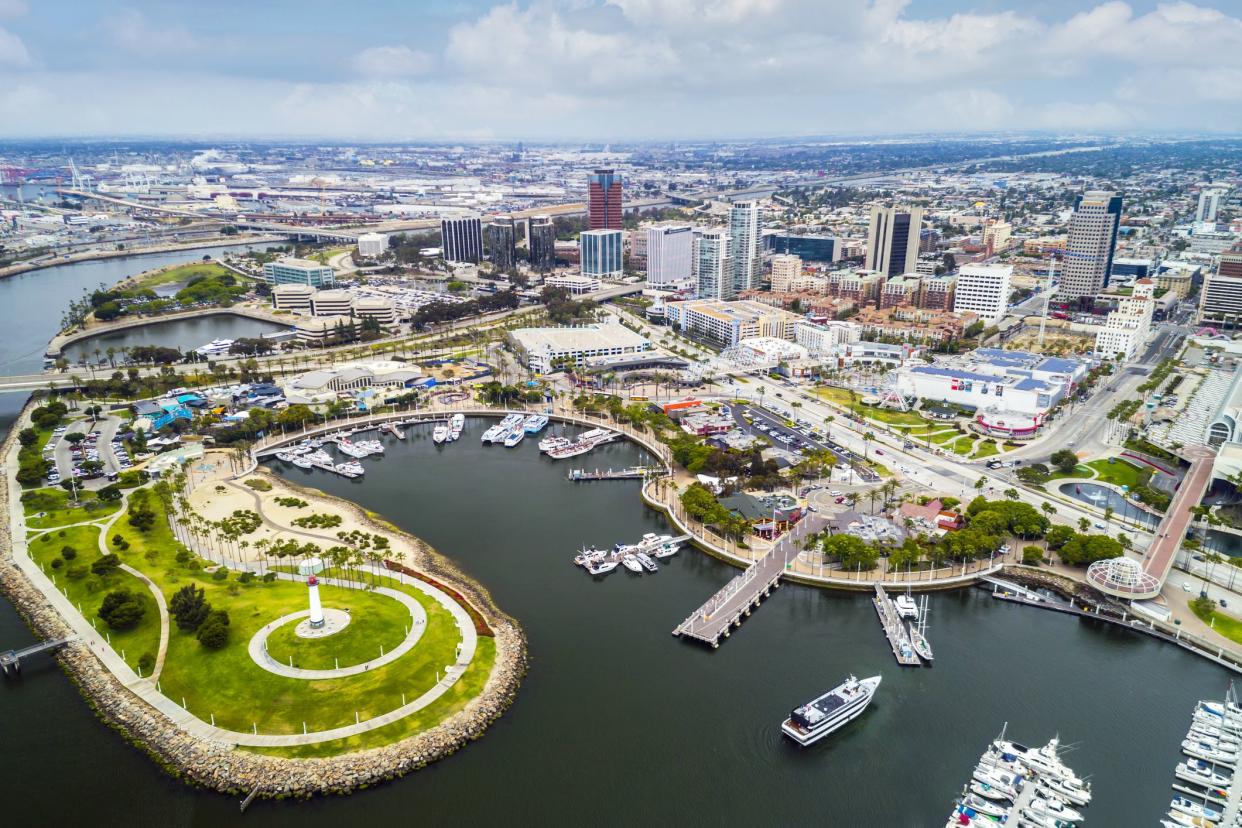
Southern California and the Los Angeles metropolitan area aren't renowned for their walkability and public transit, but Long Beach bucks the trend. It's the 10th most walkable big city in the U.S., according to Walk Score. Ten percent of households manage without a car, and Long Beach Transit connects to neighboring transit networks throughout Los Angeles and Orange Counties. The most walkable areas include downtown, Saint Mary, and Franklin School.
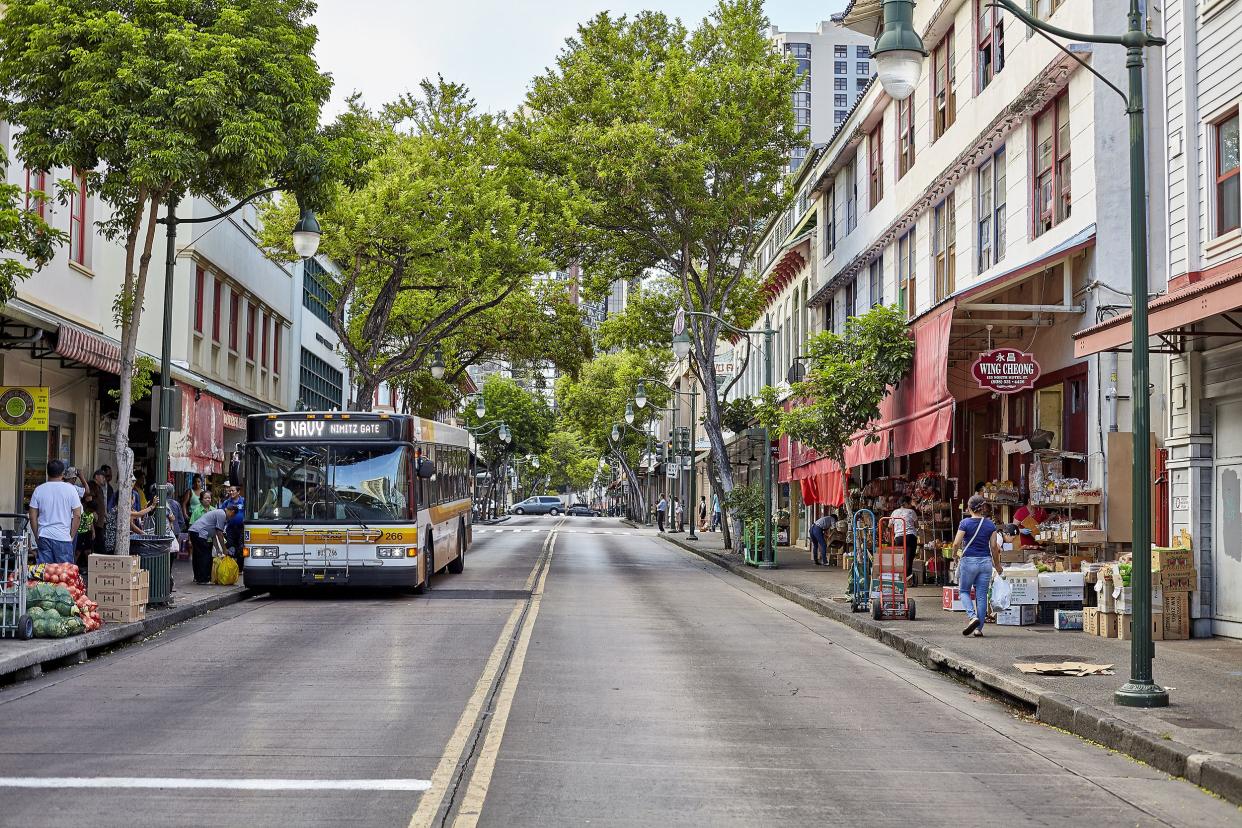
One can get pretty much anywhere you'd need to go without a private vehicle in Hawaii's biggest city, which may be part of the reason why 17% of households don't own one. Oahu's limited geography, combined with more than 100 TheBus routes, make it easy to reach different neighborhoods and most major towns across the island. The most walkable neighborhoods are downtown, Waikiki, Ala Moana, and Kaka'ako.
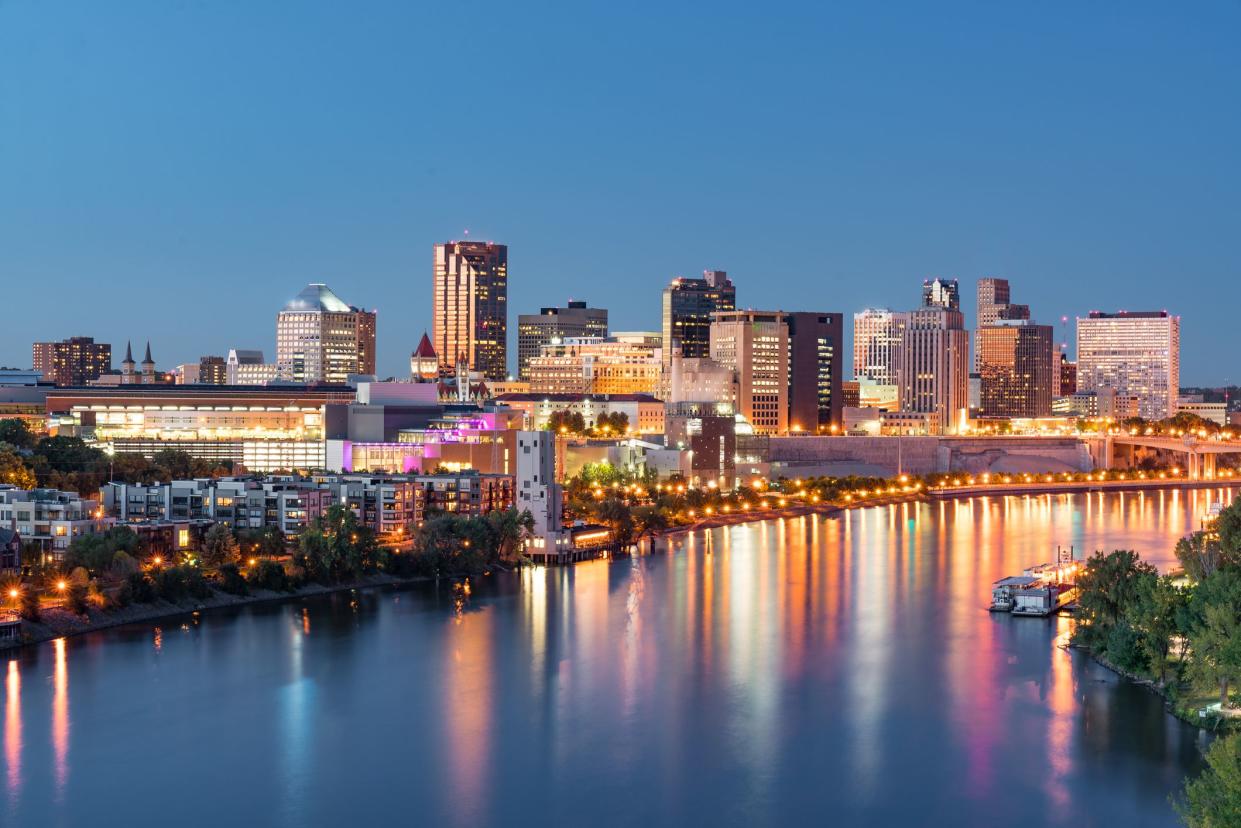
Minnesota's capital, St. Paul, makes the list thanks to its wealth of protected bike lanes and superior bike safety statistics. From 2014 to 2018, there were just 0.36 bicycle fatalities per 100,000 residents, which is why SmartAsset awarded this Midwestern capital the No. 10 spot for most bike-friendly U.S. city. St. Paul does fall short when it comes to walkability, though the downtown and South Frogtown areas score in the 80s and 90s on Walk Score.
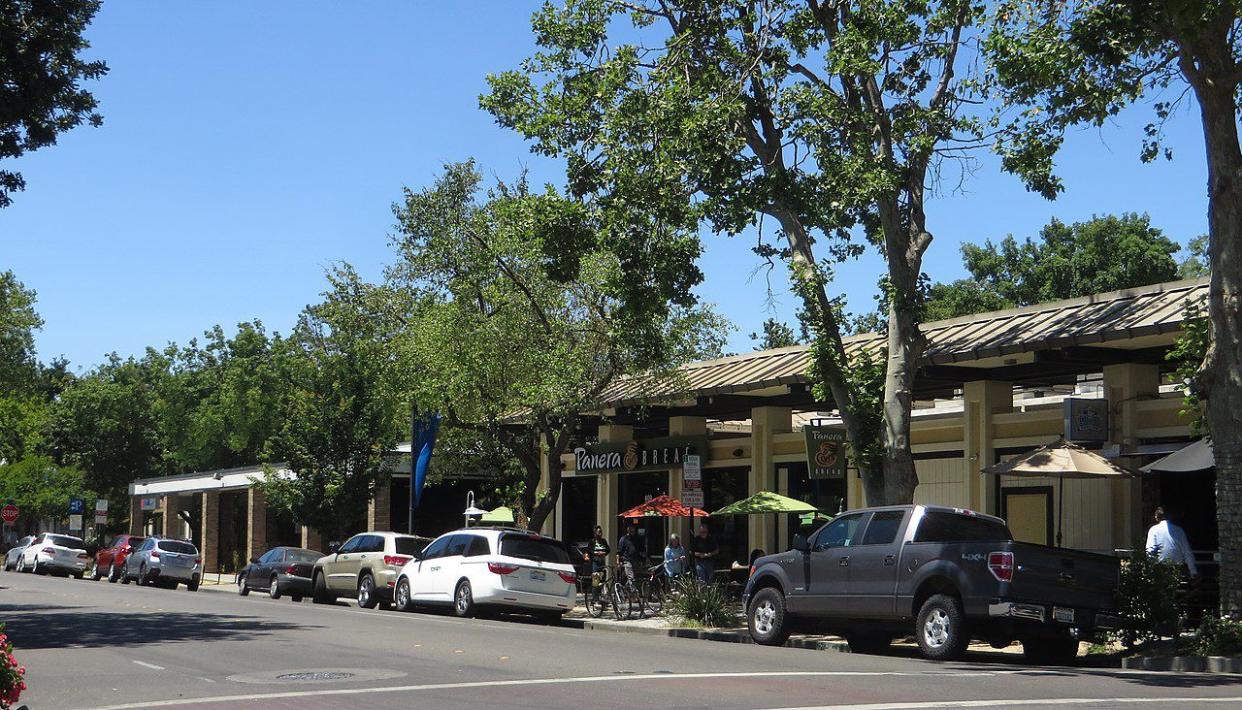
Home to the University of California, Davis, this college town is dominated by bikes — so much so that some have compared it to the Netherlands. Thank forward-thinking city planning in the 1970s and '80s, which had Davis built around bikes, not cars. That infrastructure, combined with the town's flat terrain, transformed this small Yolo County municipality into the "Bicycle Capital of the World," meaning that living car-free is simple here. Today, more than 98% of the main streets in Davis have some sort of bicycle provision, and People for Bikes rated this town as the second most bike-friendly city in North America.
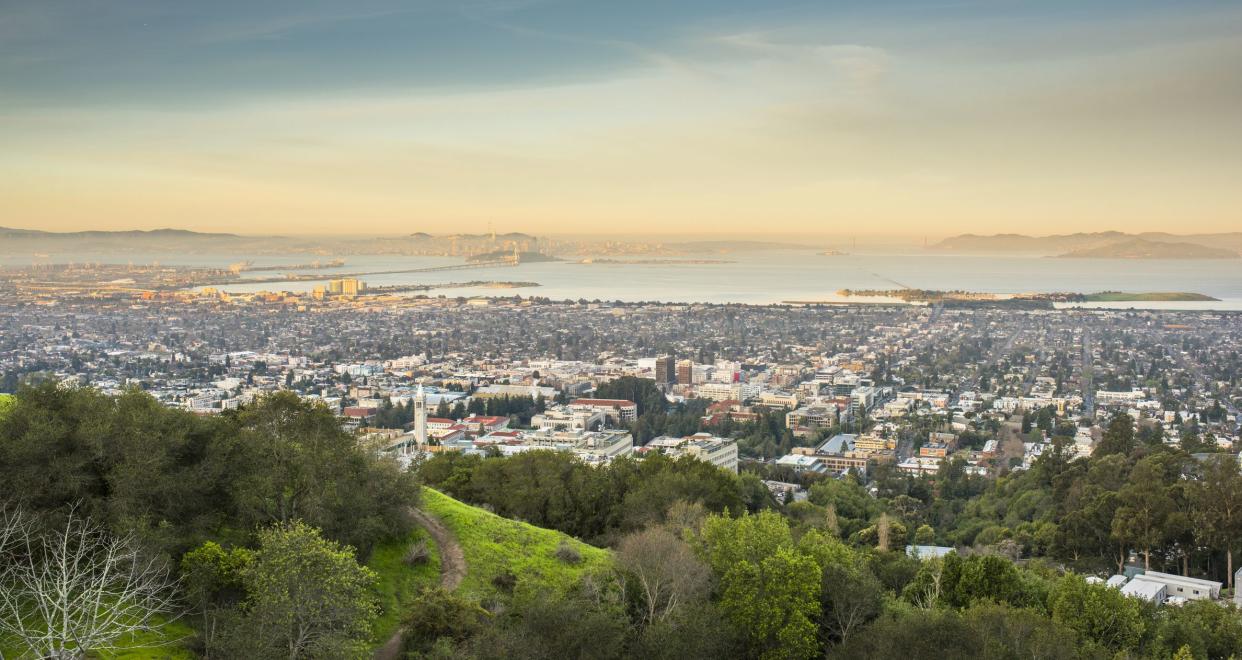
Another California university town, Berkeley features a robust bike network, which propels it to People for Bikes' No. 2 spot for bikeable mid-size North American cities. To put Berkely's infrastructure into prospective, the city received a 72/100 for its network score, while the average North American city scores 25. Like San Francisco, Oakland, and other Bay Area cities, Berkeley also benefits from BART, which connects the college town to Daly City, Millbrae, and the San Francisco International Airport.
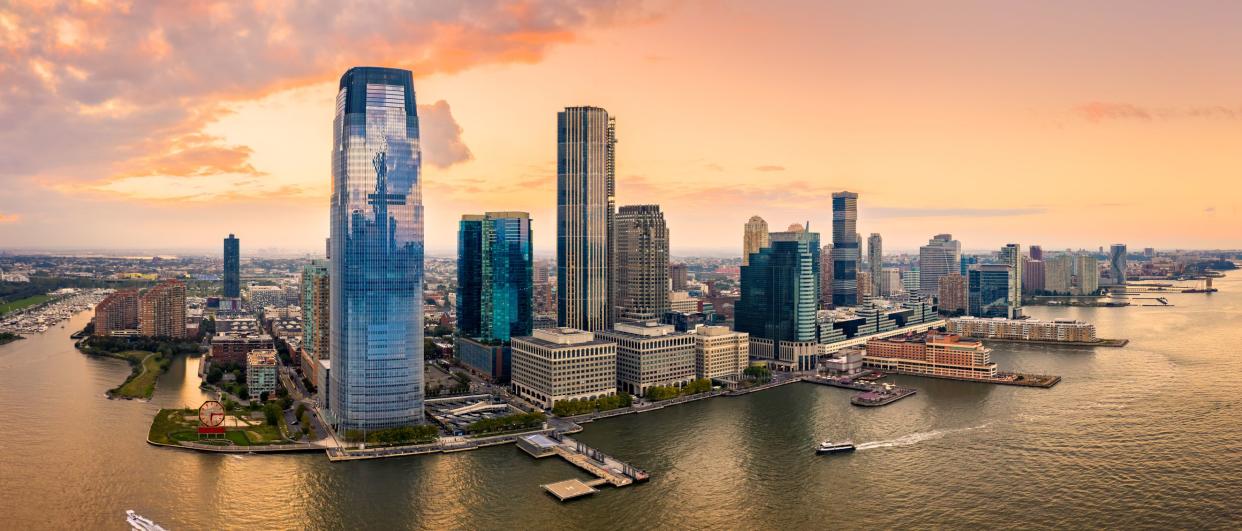
Jersey City scores higher on walkability and public transportation than better-known East Coast metropolises such as Chicago and Philadelphia. Nearly 50% of the city's commuters take public transit to get to work, relying on a system of subways, buses light rails, and rentable bikes. The city also has a Vision Zero Action Plan, which aims to eliminate traffic-related injuries and deaths by 2026.
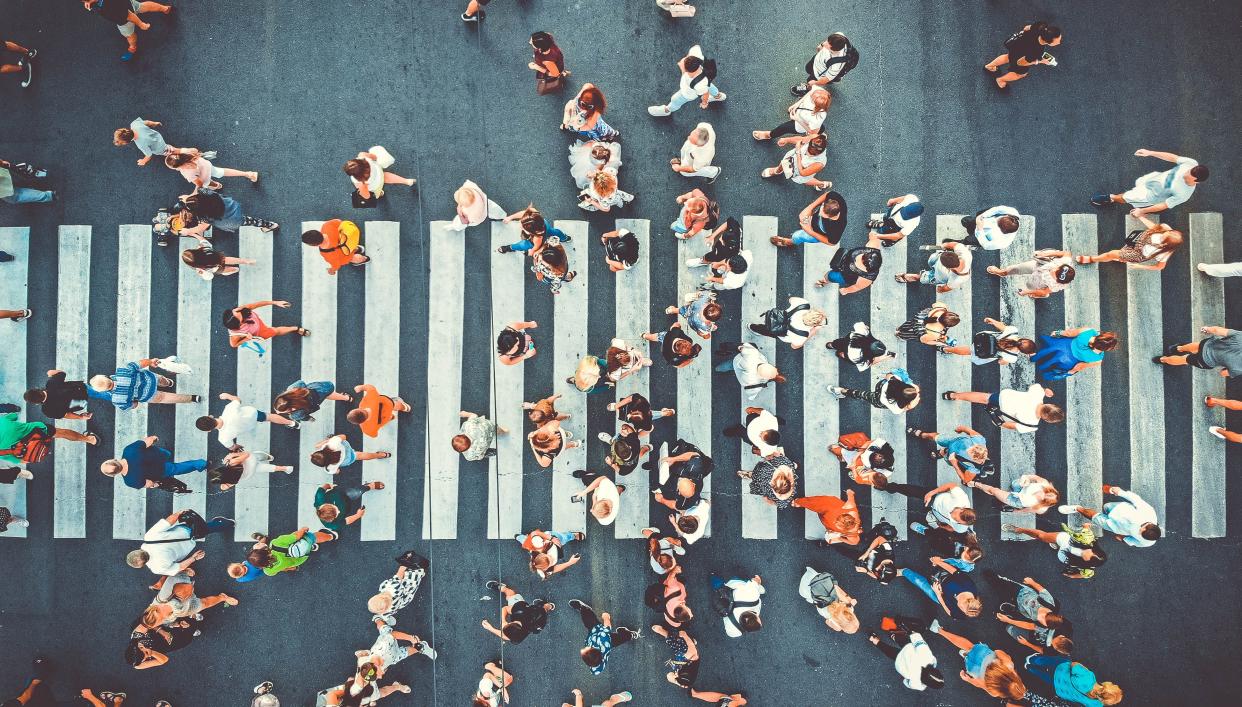
Like Cheapism's content? Make sure to follow us here.
